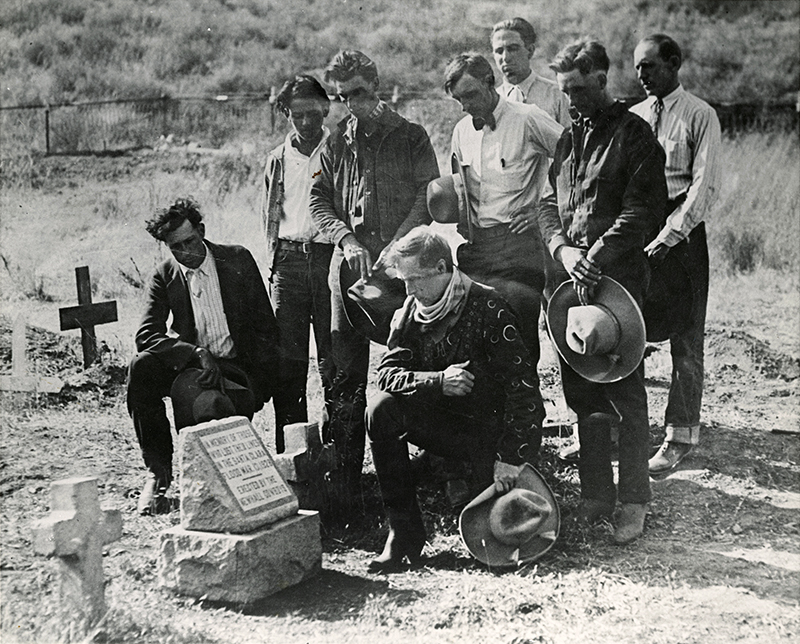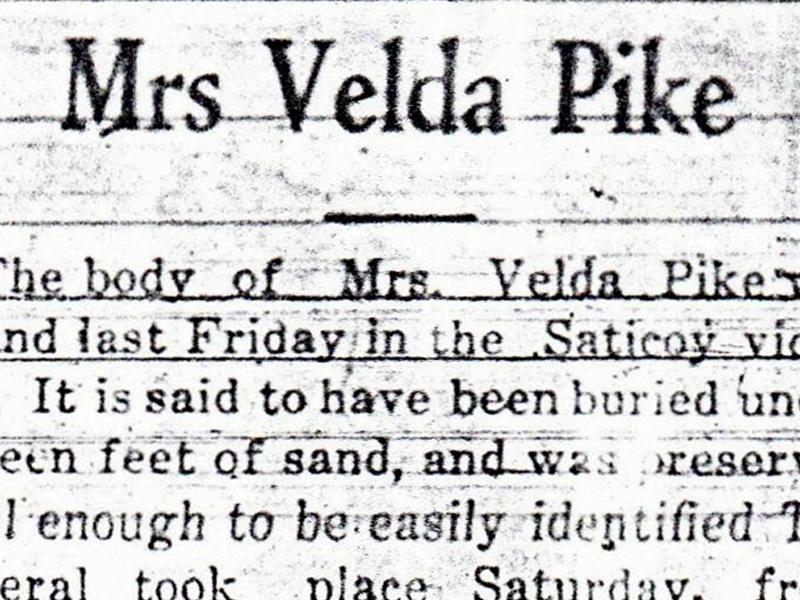|
|
[PART 1: RISE & FALL OF WILLIAM MULHOLLAND] [PART 2: VICTIMS AND HEROES] [PART 3: TOO BIG NOT TO FAIL]
St. Francis Dam Disaster: Victims and Heroes.
By Alan Pollack, M.D.
| Heritage Junction Dispatch, March-April 2008
|
Shortly before midnight on March 12, 1928, carpenter Ace Hopewell was riding his motorcycle up San Francisquito Canyon road on his way to Powerhouse No. 1 of the Los Angeles Bureau of Power and Light. Hopewell passed by the mighty St. Francis Dam, which was completed just two years earlier by Los Angeles Water Chief William Mulholland and had just been filled to capacity five days prior. Mulholland had achieved heroic status in Los Angeles when he completed the Owens Valley-Los Angeles Aqueduct in November 1913, a miraculous accomplishment that allowed a small, semi-desert town to grow into the metropolis we know today. Following the completion of the aqueduct, Mulholland directed the construction of a series of dams in the Los Angeles area with the goal of providing a large reserve of water for the city in the event of a disruption of the aqueduct from events such as earthquakes or sabotage by the angry residents of the Owens Valley, who had been blowing up sections of the aqueduct to protest the means by which Los Angeles had taken water from their valley. As he rode one mile past the dam, Hopewell suddenly stopped when he heard a landslide-like crashing sound from back in the dam area. It was 11:57:30 p.m. He continued up the canyon to the powerhouse where he learned that the huge dam had ruptured, spilling 12 billion gallons and a 180 foot high wall of water into San Francisquito Canyon. It turns out, Hopewell was the last living person to see the St. Francis Dam before it ruptured, creating the second largest disaster in California history as an epic flood of water and debris traveled 55 miles through San Francisquito Canyon and the Santa Clara River Valley, devastating the towns of Piru, Fillmore, and Santa Paula, and killing between 450 and 600 people before emptying into the Pacific Ocean at Montalvo between Oxnard and Ventura. At the base of the dam that night as Hopewell passed by may have been dam keeper Tony Harnischfeger and his wife, Leona Johnson. Earlier that day, Harnischfeger had placed a frantic call to Mulholland when he noticed muddy water leaking from the Western abutment of the dam. While it was normal for dams to leak to some extent, the mud indicated to Harnischfeger that the base of the dam might be eroding and subject to catastrophe. Mulholland arrived around 10:30 a.m. with his assistant Chief Harvey Van Norman and inspected the dam. He concluded that the leakage appeared normal and went back to Los Angeles — a decision he would regret for the rest of his life. Later that night, Harnischfeger may have noticed more frightening problems with the dam. He might have been inspecting the dam base as Hopewell passed by. We will never know for sure. After the dam rupture, his wife’s lifeless body was found at the base of the dam; Harnischfeger’s body was never found.
A mile and a half downstream from the dam was a group of homes for workers at Powerhouse No. 2. Lillian Curtis and her family were awakened by the roar of the floodwaters bearing down on the powerhouse. Lillian and her son scrambled up a hillside while her husband went to retrieve their daughter. The mother and son were the family's only survivors. Ray Rising, a utility man from the powerhouse, also was awakened and faced a 10-story-high wall of water. He was swept into the flood but managed to climb on to a floating rooftop which took him to safety. He was the only other survivor at this powerhouse. The building itself was swept away by the flood, leaving only the floor slab. At the base of San Francisquito Canyon (today the Tesoro Del Valle development) was the ranch of movie star Harry Carey. The flood roared through and destroyed part of the ranch, including a Navajo Trading Post which had been a popular tourist attraction. Carey was away on business in New York at the time. Legend has it that a group of Navajo Indians hired by Carey to run the trading post had called Carey asking to leave the ranch for Arizona the night before the dam break on the basis of a premonition by their medicine man of an impending dam rupture. But according to Carey’s son, Harry Carey Jr., the Indians actually asked Carey one month prior if they could leave when they did — after the medicine man went deer hunting near the dam and noticed a big crack in its face. As the flood approached Castaic Junction, Raymond Starbard, an assistant Edison patrolman at the Saugus Substation (which can still be seen on Magic Mountain Parkway), was almost washed away by the flood. He hitched a ride to Wood’s Garage next to the Saugus Cafe. There, Starbard made a call to the Newhall Sheriff’s Substation No. 6 and was credited with being the first person to sound the alarm about the flood. Starbard lived in a home next to the substation built by the Edison company for its workers. His home can be seen today as one of the historic structures at Heritage Junction Historic Park in Newhall. Just past the Ventura County line along the Santa Clara River was a railroad siding called Kemp. There, a group of 150 workers for the Edison company were fast asleep in a tent camp used while they were building a transmission line. Night watchman Ed Locke watched in horror as the huge flood of water approached the camp. He ran through the camp, waking up as many people as possible. Locke, a true hero of the disaster, perished that night, along with 84 of the workers as the flood hit a geologic outcropping called Blue Cut, which created a whirlpool effect that uprooted the tents. Most of the survivors had their tents zipped up, which allowed them to float on the whirlpool. There were other heroes to recognize at Santa Paula. Louise Gipe, a night telephone operator at Santa Paula, received a call from the Pacific Long Distance telephone operator at 1:30 a.m., warning of the flood headed her way. Ignoring the peril to her own life, she stayed at her post, notifying California Highway Patrolman Thornton Edwards and calling residents in the low-lying areas of Santa Paula to warn them about the impending flood. Edwards would become known as the "Paul Revere of the St. Francis Flood" as he raced wildly from door to door warning residents of Santa Paula. While Edwards spread the alarm through Santa Paula, deputy sheriff Eddie Hearne raced up the Santa Clara River Valley toward the flood with his siren blaring to warn residents. He made it as far as Fillmore, where he met the flood waters and had to stop his wild ride.
Alan Pollack, M.D., is president of the Santa Clarita Valley Historical Society. |
ALSO SEE:
Background: Forgotten Casualties (CSUN 2013)
• Memorialization and Memory • Paper: Oral History (Licon 2014) Story: Victims & Heroes
FILM: Body Recovery, Newhall Morgue
FILM: Nighttime Recovery of Bodies
3-17-1928
Tony Harnischfeger
Lyman & Lillian Curtis
Marjorie & Mazie Curtis (Mult.)
San Francisquito School
Cecilia Small, Schoolteacher
Ruiz Family x7
Pete Rivera
Erratchuo 1928
1928 Mourners
Newhall Cowboys 1928 Marker x2
Newhall Morgue
Gottardi Family
Felda Pike Obituary
Saugus Community Club Members
Oral History: Thelma McCawley Shaw 2010
Oral History: Biz Basolo 2009
|
The site owner makes no assertions as to ownership of any original copyrights to digitized images. However, these images are intended for Personal or Research use only. Any other kind of use, including but not limited to commercial or scholarly publication in any medium or format, public exhibition, or use online or in a web site, may be subject to additional restrictions including but not limited to the copyrights held by parties other than the site owner. USERS ARE SOLELY RESPONSIBLE for determining the existence of such rights and for obtaining any permissions and/or paying associated fees necessary for the proposed use.


















